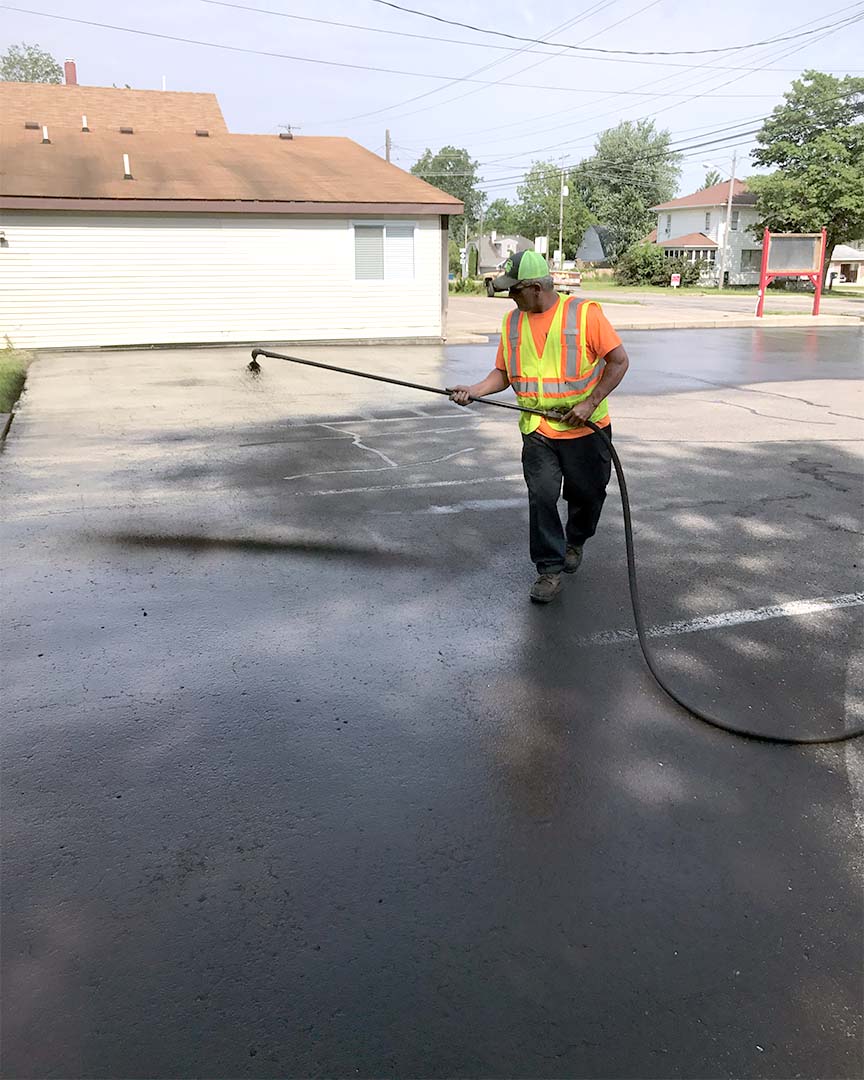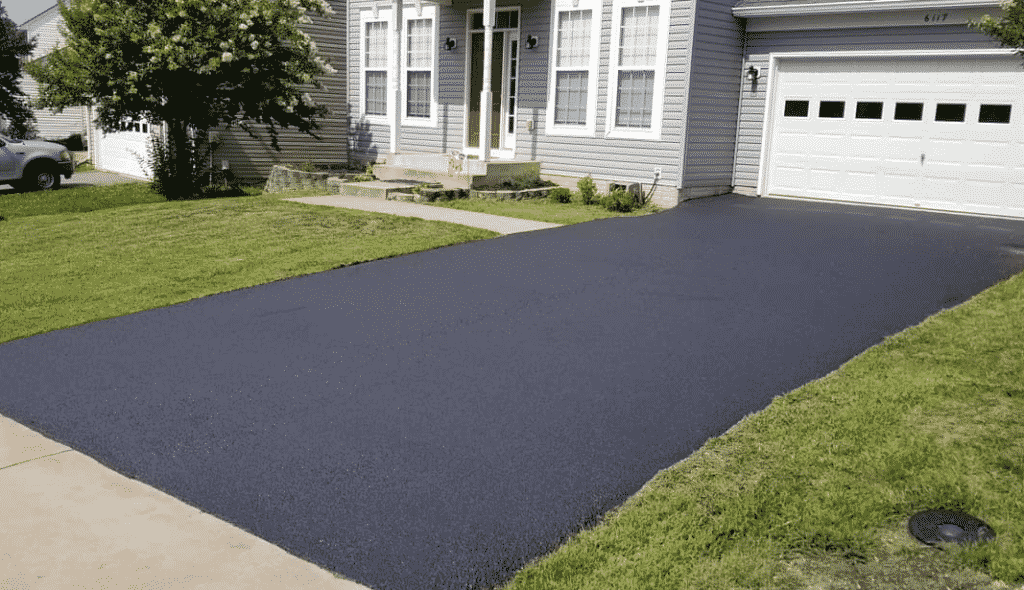Enhance Longevity: Warm Mix Asphalt Sealing for Angled Parking Structures
Enhance Longevity: Warm Mix Asphalt Sealing for Angled Parking Structures
Blog Article
Hot Mix Asphalt: A Sustainable Service for Pavement
Hot Mix Asphalt (HMA) has actually emerged as a leading sustainable choice for sidewalk services, supplying a myriad of cutting-edge technologies and environmental benefits. As the need for environmentally friendly construction techniques expands, discovering the subtleties of HMA's sustainability can give beneficial insights into the future of sidewalk solutions.
Ecological Benefits of Hot Mix Asphalt

In Addition, Hot Mix Asphalt helps to minimize city warm island impacts. Its dark color absorbs sunlight, lowering the quantity of warm showed back right into the environment compared to lighter-colored pavements. This can lower ambient temperature levels in city areas, lowering the need for cooling and ultimately decreasing power intake.
Additionally, Hot Mix Asphalt adds to enhanced stormwater monitoring. Its permeable nature permits water to charge and infiltrate the sidewalk groundwater materials, lowering overflow and the danger of flooding. These ecological benefits make Warm Mix Asphalt a sustainable selection for paving highways and roadways.
Power Performance in HMA Manufacturing
Is power performance a crucial variable in the production of Warm Mix Asphalt (HMA)? Definitely. Power plays a substantial role in the production of HMA, affecting both cost and ecological sustainability. One key element of power efficiency in HMA production is making use of cozy mix asphalt (WMA) technologies (regrading). WMA permits for the mixing and placement of asphalt at reduced temperatures compared to standard warm mix asphalt, causing minimized energy consumption throughout manufacturing. This process not just lowers gas usage but likewise reduces greenhouse gas discharges, making it a much more environmentally friendly alternative.
In addition, developments in plant innovations have actually caused more energy-efficient HMA production procedures. Modern plants are developed with attributes like recycled asphalt pavement (RAP) processing capacities, reliable burner systems, and improved insulation, all contributing to energy financial savings. By optimizing energy usage in HMA production, the industry can decrease its carbon footprint while maintaining high-quality sidewalk materials. Energy efficiency is, consequently, an essential consideration in making sure the sustainability of Warm Mix Asphalt production.
Recyclability of Warm Mix Asphalt
The recyclability of Warm Mix Asphalt (HMA) is a crucial aspect of its sustainability and lasting environmental impact. HMA is just one of the most recycled products in the USA, with over 100 million tons of redeemed asphalt sidewalk (RAP) being recycled annually in brand-new pavement building. Recycling HMA offers a number of environmental benefits, such as minimizing the demand for virgin materials, reducing power usage throughout production, and lowering the quantity of waste sent to garbage dumps.
The process of recycling HMA includes milling the existing pavement, crushing it into smaller pieces, and mixing it with new aggregate and asphalt binder to develop a recycled mix. Overall, the recyclability of HMA plays a significant duty in advertising lasting techniques within the pavement sector.

Long-Term Efficiency of HMA
Asphalt pavements show resilience and resilience over an extended duration, reflecting the lasting efficiency of Warm Mix Asphalt (HMA) In addition, improvements in HMA technology, such as the use of polymer-modified binders and warm mix asphalt, have further enhanced the sturdiness and longevity of HMA pavements. visit site By prioritizing top quality building and construction and upkeep techniques, HMA proceeds to show itself as a sustainable and affordable option for lasting sidewalk infrastructure.

HMA: Sturdiness and Sustainability
Demonstrating both resilience and sustainability, Hot Mix Asphalt (HMA) has actually ended up being a keystone in the building and construction of resilient sidewalk facilities - commercial parking lot paving. HMA's longevity comes from its ability to stand up to hefty lots, rough weather, and high traffic volumes, making it a trustworthy option for roadways, highways, and airport runways. The structure of HMA, which typically includes aggregates, binder, and filler, plays an important duty in improving its durability and resistance to tear and put on
Furthermore, HMA's sustainability depends on its recyclability and energy-efficient manufacturing process. The capability to recycle reclaimed asphalt pavement (RAP) in new HMA blends reduces the demand for virgin look at here products and minimizes the environmental impact of pavement construction and upkeep. In addition, the power efficiency of creating HMA hinges on its lower blending temperature levels contrasted to other pavement materials, causing minimized energy intake and greenhouse gas discharges.
Final Thought
Finally, hot mix asphalt (HMA) uses a sustainable solution for pavement with its eco-friendly features. HMA's recyclability, energy efficiency in production, and long-lasting durability make it an environment-friendly selection for roadway building. By conserving natural deposits, reducing waste, and lowering greenhouse gas emissions, HMA plays a critical duty in advertising sustainability in infrastructure development. Its capability to alleviate metropolitan warm island results further highlights its value in developing resistant and ecologically conscious pavement systems.
HMA is one of the most recycled products in the United States, with over 100 million lots of recovered asphalt pavement (RAP) being reused each year in brand-new pavement building.The process of reusing HMA involves grating the existing sidewalk, squashing it right into smaller pieces, and blending it with brand-new go accumulation and asphalt binder to create a recycled mix.Asphalt pavements show toughness and durability over an extensive duration, reflecting the long-term performance of Hot Mix Asphalt (HMA) In addition, advancements in HMA technology, such as the usage of polymer-modified binders and warm mix asphalt, have better boosted the toughness and longevity of HMA sidewalks. The ability to reuse recovered asphalt sidewalk (RAP) in new HMA combinations lowers the need for virgin materials and decreases the environmental influence of sidewalk building and construction and upkeep.
Report this page